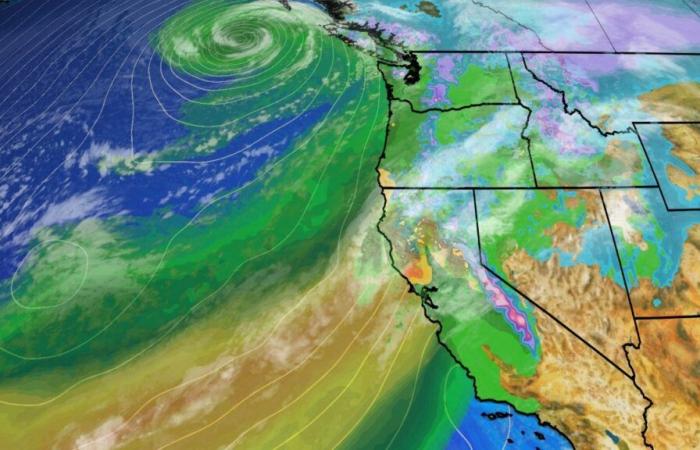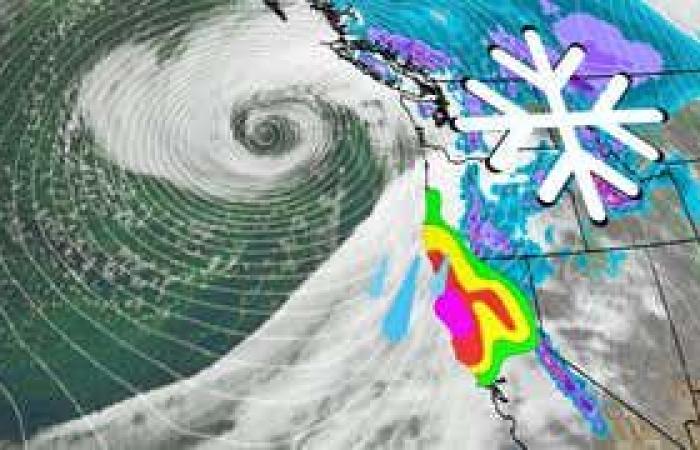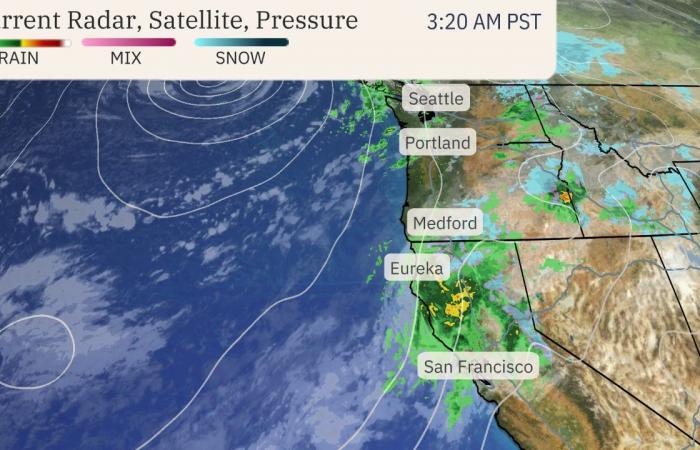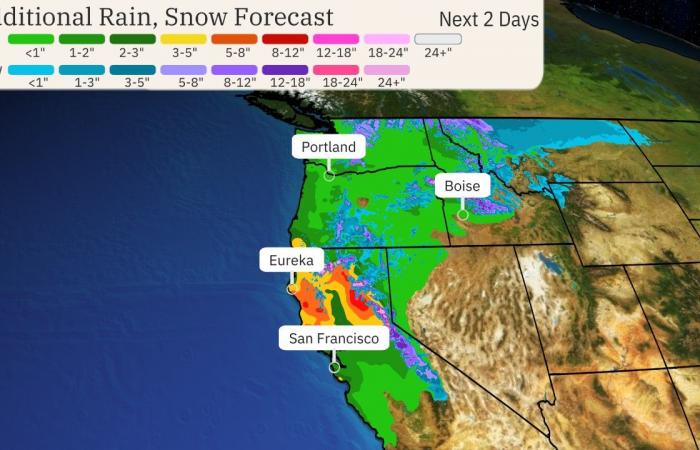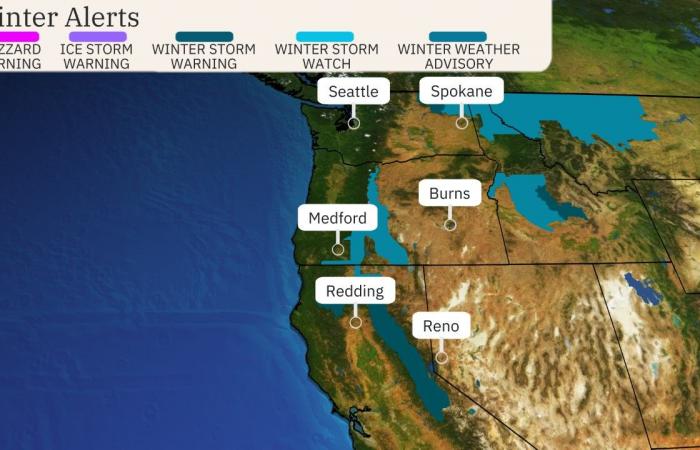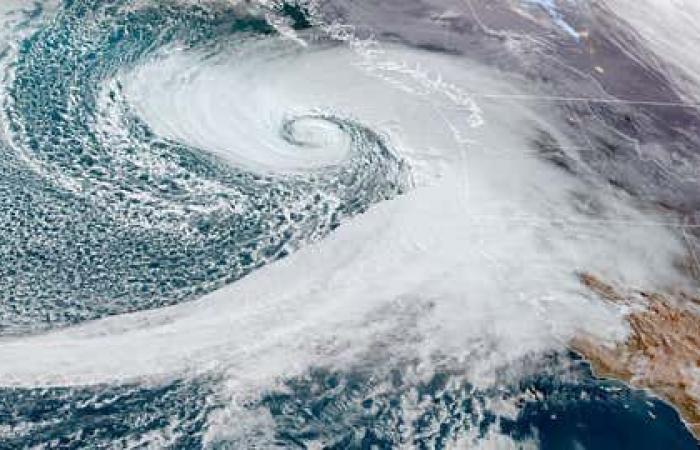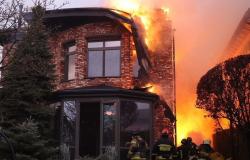Play
- An atmsopheric river will continue to pummel parts of the West through the end of the week.
- Heavy rain could trigger flooding, mudslides and rockslides, especially in Northern California and southwest Oregon.
- Heavy snow will pile up in higher elevations.
- This wet pattern was kicked off by a ‘bomb cyclone’ that brought damaging winds to the Northwest.
A potent atmospheric river will continue to hammer Northern California and parts of the Northwest through the end of the week, with possible flooding rain, mudslides and rockslides as heavy snow piles up in the mountains.
Latest Status
This wet pattern was kicked off by a “bomb cyclone” that brought damaging winds to the Northwest, especially Washington, late Tuesday. See the bottom of this article for a recap on that chapter of the storm.
(MORE: ‘Bomb Cyclone’ Knocks Out Power To Hundreds Of Thousands)
Now, the biggest concern has transitioned to a potent atmospheric river of moisture that will persist through the end of the week on the West Coast. This band of moisture, which will be reinforced by a second offshore storm, is expected to produce heavy rain and mountain snow through Friday night, with the worst impacts affecting Northern California and southwest Oregon going forward.
You can see where the rain and mountain snow is ongoing in the West right now in the radar snapshot below. The heaviest precipitation is located in Northern California, and that will persist through Friday.
(MORE: Atmospheric Rivers 101)
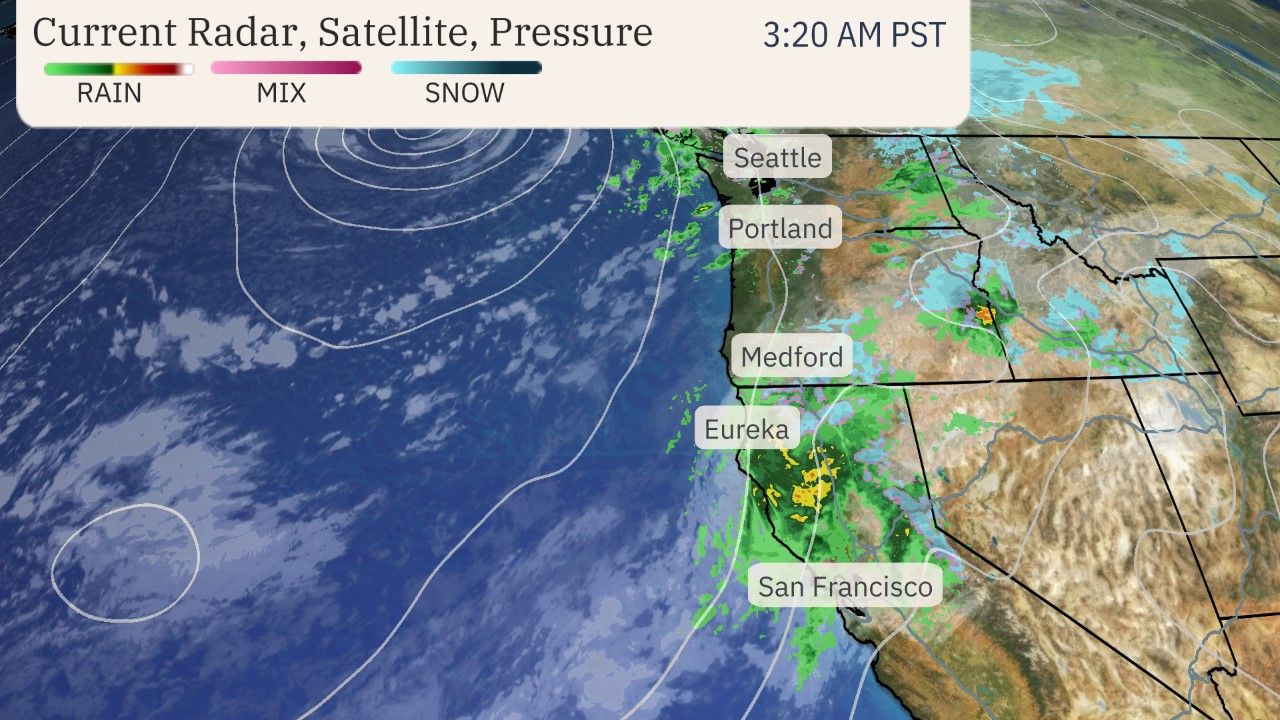

Current Radar, Satellite And Pressure
Breaking Down The Impacts
Heavy Rain – The biggest rainfall totals through the end of the workweek will take aim at Northern California (north of the Bay Area and Sacramento) into southwest Oregon. Storm total rainfall, including what has already fallen, could be 12 to 16 inches in some locations, according to NOAA’s Weather Prediction Center.
Some higher elevation areas in Northern California had picked up over 6 inches of rain as of early Thursday morning. Keep in mind the map below shows the rainfall to expect in addition to what has already fallen and not storm totals.
The heavy rain will result in flooding for poor drainage areas as well as creeks and rivers. Mudslides will be an increasing threat too, especially in any recent wildfire burn areas. Rockslides are also possible along some mountain roads.
A rare high-risk excessive rainfall outlook has been issued by NOAA’s Weather Prediction Center in northwest California through Thursday night, including Eureka, because of how serious the flood threat could be in that area.
Elsewhere, lighter amounts of additional rain can be expected in western Oregon and western Washington going forward, with the heaviest amounts in coastal and foothill locations.


Additional Rain And Snow Forecast
Snowfall – The National Weather Service has issued various winter weather alerts from Northern California into other parts of the Northwest.
Travel could be impacted by snow in some passes, including Interstate 80 in California’s northern Sierra and Siskiyou Pass along Interstate 5 near the Oregon and California border.
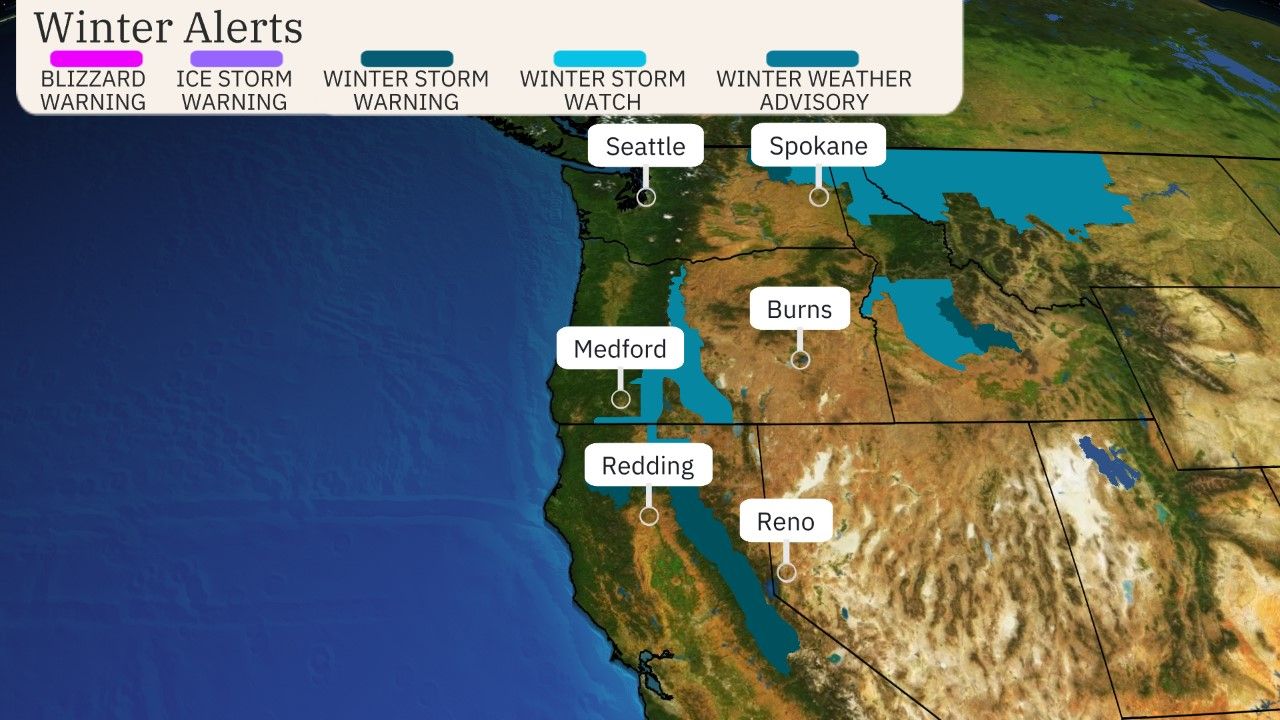

Winter Weather Alerts
(Issued by the National Weather Service.)
Bomb Cyclone Recap
The “bomb cyclone” that kicked off this stormy pattern on Tuesday night became one of the northeast Pacific’s strongest storms on record, resulting in damaging winds across the Pacific Northwest.
(MORE: Bomb Cyclones 101)
The storm easily met the criteria for what meteorologists call bombogenesis, from where the term “bomb cyclone” originates. That means its pressure dropped by 24 or more millibars in 24 hours or less. This storm more than doubled that criteria.
Its estimated pressure dropped as low as 942 millibars, according to the 10 p.m. EST Tuesday analysis from NOAA’s Weather Prediction Center. That’s on par with an October 2021 storm (942.5 millibars) for the lowest pressure in about 50 years of records for that part of the northeast Pacific region. Since these are estimates, there is some uncertainty in the exact pressures.
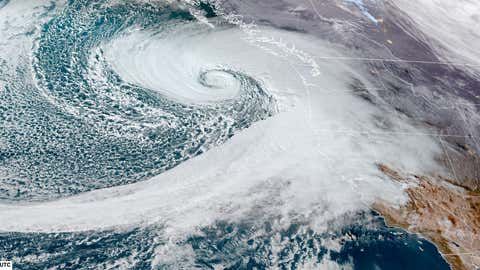

Satellite view of the powerful storm Tuesday evening along the West Coast.
(CIRA/RAMMB)
Chris Dolce has been a senior meteorologist with weather.com for over 10 years after beginning his career with The Weather Channel in the early 2000s.

